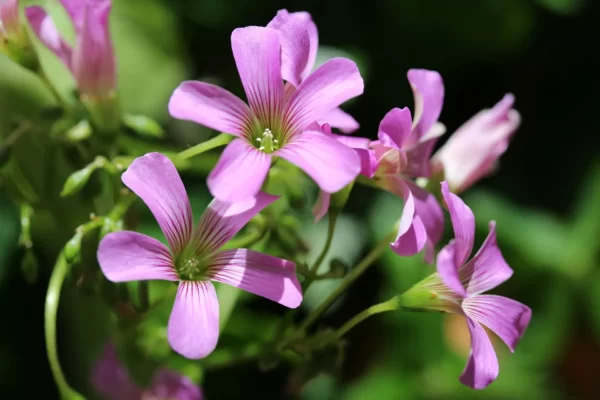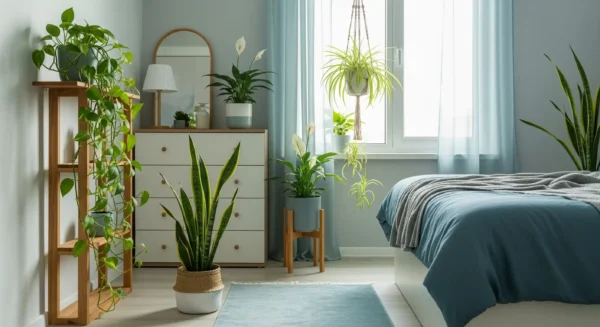Best Beginner-Friendly Houseplants: Green Bliss Without the Stress!
Have you ever wanted a lush indoor jungle, a tiny green getaway right in your living room, but then thought about how hard it would be to take care of? Or maybe you’re one of the many people who are sure they have a “black thumb” and that plants just… Well, will they wilt when you’re around? With a warm grin and a lot of experience, I’m here to inform you that your green oasis is closer than you think! Really.
This isn’t just another list of plants. This is your helpful, friendly guide to finding the Best Easy Beginner-Friendly Houseplants, which are the kinds of plants that are very tough, very rewarding, and almost cheer you on as you learn. These plants will forgive your mistakes, grow with you as you learn, and still look great. So, get comfortable, maybe with a cup of tea, and let’s look at these “unkillable” beauties that are ready to change your area and, just maybe, turn that black thumb a gorgeous shade of green.
Why even bother with houseplants? (Spoiler: It’s Great!)
You might be thinking, “Okay, easy is good, but why should I even get into houseplants?” Let me count the ways! Bringing a little bit of the outside in has some really great benefits, in addition to looking nice (which they do!).
We’re talking about things like a small improvement in air quality. But let’s be honest, you’d need a forest to completely clean your home. Every little bit helps, right? Studies and many personal stories (including mine!) show that being among plants may really help you relax and feel better. Their gentle presence is just comforting. They also make great decorations for your home since they provide life, color, and personality. They can turn a plain corner into a lively little scene. And to be honest? Taking care of something and watching it grow gives you a wonderful sense of success and a nice connection to nature. The best part? Even the very easy plants we’re going to meet soon have all of these great benefits.
Are you ready to get these benefits without the stress? Let’s go into the plants that make it all happen…
Our Top Picks: The Best Indoor Plants That Are Easy to Care For
Okay, this is where the fun begins! I’ve selected out some of the most beautiful, versatile, and easy-to-care-for houseplants. These are the best plants for people who don’t want to spend a lot of time caring for them. They’re great for beginners. I’ll tell you why each one is a beginner’s dream and how to keep it happy with as little trouble as possible.
Dracaena trifasciata, which used to be called Sansevieria trifasciata (Snake Plant)
The Snake Plant is the best low-maintenance plant you can get! This plant is strong and attractive at the same time, with sword-like leaves that stand tall and proud. It’s the kind of plant you could almost forget about, and it would probably just keep looking nice.
- Why It’s a Beginner’s Dream: Where do I even begin? Snake plants can live in a wide range of light conditions, even low light, and they don’t care much about anything at all. They are very drought-tolerant and would rather be too dry than too wet. They are the powerful and quiet plants.
- Light Needs Made Easy: These guys can change to fit any situation. They will be happiest in bright, indirect light, like a few feet from a sunny window. But they can also handle low-light corners remarkably well. Just make sure they don’t get too much direct, hot sun, which can occasionally burn their leaves.
- Watering Wisdom (The Don’t-Panic Guide): Most new plant owners mess up here, but Snake Plants make it easy. Only water the plants well when the soil is almost entirely dry. I mean, very dry, people! Depending on the time of year and how much light they’re getting, this frequently means watering my Snake Plants only once every three to six weeks. If you’re not sure, wait a little longer. Their biggest enemy is too much water.
- Soil and potting tips: Any potting mix that drains nicely will work. A mix of cacti and succulents is also a terrific alternative. And, like with all of our easy-to-care-for friends, make sure your pot has holes in the bottom for drainage!
- Fun Facts and Bonus Points: Snake Plants are known for being great at cleaning the air since they turn carbon dioxide into oxygen at night. They come in a lot of different sizes and fascinating patterns. Heads up: they are moderately hazardous if eaten, so keep them away from dogs and little kids who might be interested.
ZZ Plant (Zamioculcas zamiifolia)
The ZZ Plant is the Snake Plant’s sidekick, and it can’t be hurt either. The ZZ is the ultimate example of “thriving on neglect.” Its glossy, dark green leaves look almost too flawless. I sometimes joke that ZZs are so easy to care for that they almost take care of themselves.
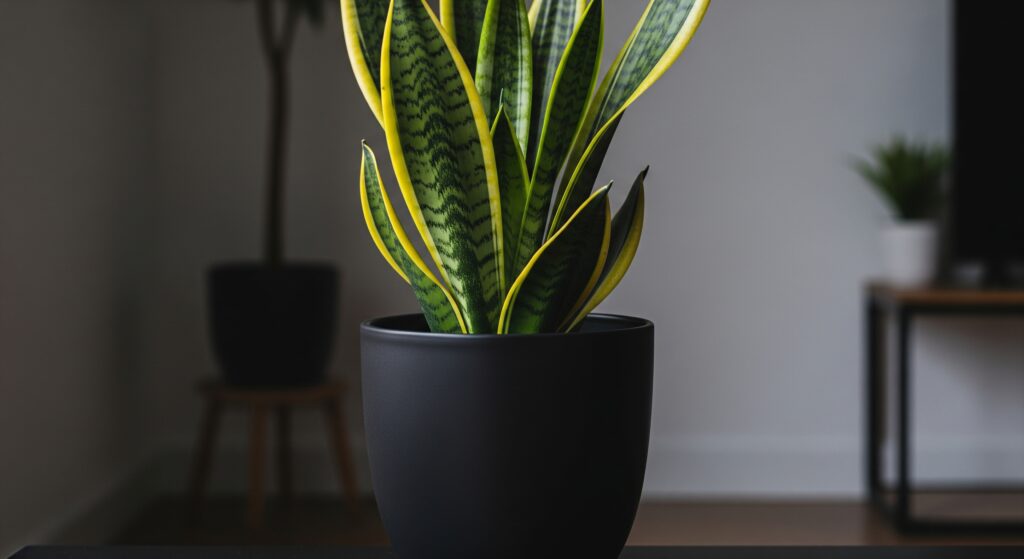
- Why It’s a Beginner’s Dream: The ZZ Plant can survive long periods of time without water because its big, potato-like rhizomes store water. It can also grow well in low light and isn’t very likely to become sick or have a lot of bugs. This plant is great for people who forget to water their plants or live in a dark flat.
- Light Needs Made Easy: ZZs do best in low or medium indirect light. They can even handle fluorescent lights in offices. They can take certain bright places, but don’t let them get too much direct, strong sunshine, which can burn their gorgeous foliage.
- Watering Wisdom (The Don’t-Panic Guide): Like the Snake Plant, less is absolutely more. Let the soil dry up fully before watering again. This could imply that you only need to water once a month, or even less if the light is low. Those rhizomes are working!
- Soil and Potting Tips: A potting mix that drains effectively is very important. A mix of cacti and succulents works great again. Make sure there is good drainage.
- Fun Facts and Bonus Points: The ZZ Plant is recognized for being tough and able to bounce back even if you don’t take care of it very well. It also works well as an air cleaner. It is poisonous if eaten, just like the Snake Plant, therefore be careful around youngsters and dogs.
Epipremnum aureum, often known as pothos (Devil’s Ivy)
The Pothos is also known as Devil’s Ivy. This flowing beauty is a classic for a good reason. It can be used in a lot of different ways, is easy to care for, and its heart-shaped leaves can add a lot of green to shelves, hanging baskets, or even climb if you give it some support.
- Why It’s a Beginner’s Dream: Pothos plants don’t mind if you don’t water them or give them enough light. They’re also quite easy to grow, so you may easily manufacture more Pothos plants to give to friends or fill your own home. They are like the nice, extroverted plant that only wants to thrive and make others happy.
- Light Needs Made Easy: Pothos plants do well in a wide spectrum of light, from low to bright, indirect light. The variegation (the lighter patterns on the leaves) could be easier to see in brighter light, but the plants will grow quite fine in shadier areas as well. Stay out of the intense, direct sun.
- Watering Wisdom (The Don’t-Panic Guide): When the top inch or two of soil feels dry, water it. If your pothos plant seems a little droopy, it’s probably thirsty. This is an excellent visual clue for novices! They’ll feel better right away after a big drink.
- Soil and Potting Tips: A regular potting mix that drains effectively is the best choice for soil and pots.
- Fun Facts and Extra Points: There are numerous beautiful types of pothos, such as Golden Pothos, Marble Queen, and Neon Pothos. It’s another plant that is renowned to clean the air. Important: Pothos is poisonous to pets and people if eaten.
Chlorophytum comosum, sometimes known as the Spider Plant
The Spider Plant is a cute and happy plant that looks great in any home. Its leaves bend over and its tiny plants, called “spiderettes,” hang from the mother plant. They have a retro look that is really popular right now!
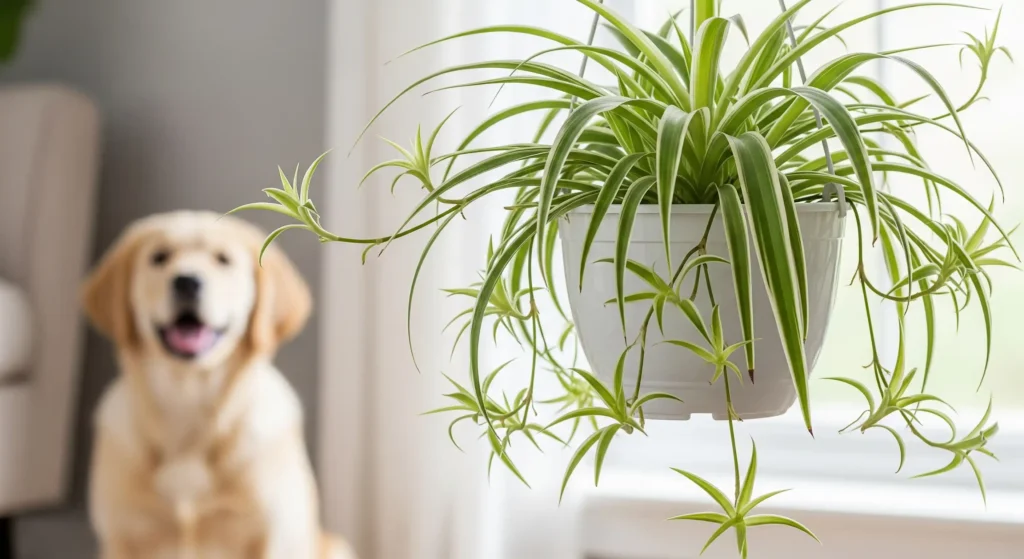
- Why It’s a Beginner’s Dream: Spider Plants are tough, flexible, and good at talking to you. It’s also easy to grow more of them from those little plantlets. Also, if you have pets, they’re one of the safest options.
- Light Needs Made Simple: They like bright, indirect light, but they can also handle less light. The tops of their leaves might get burned if they get too much direct sun.
- Watering Tips (The Don’t-Panic Guide): When the top inch or so of soil is dry, water it well. If you forget to water them every now and again, they’re really forgiving. If the water is extremely hard (too many minerals) or the air is very dry, you might see the tips of their leaves become brown.
- Soil and Potting Tips: A potting mix that is good for many things and drains well works nicely.
- Bonus Points and Fun Facts: Spider Plants are safe for cats and dogs, so they are a great choice for people who have pets! They are also well-known for being great at cleaning the air. You may easily cut off the “spiderettes” and put them in water or soil to grow new plants.
Spathiphyllum spp. (Peace Lily)
The Peace Lily is the perfect plant for beginners who want a plant with beautiful blossoms. The dark green, shiny leaves make a stunning background for the plant’s famous white “flowers,” which are really modified leaves called spathes.
- Why It’s a Beginner’s Dream: Peace Lilies are well-known for drooping a lot when they need water, which is an easy way for novices to tell! After a drink, they perk right back up. They also do well in low-light situations.
- Light Needs Made Easy: They do well in medium to low indirect light. Don’t let them get direct sunlight, which can burn their blossoms and leaves. They may even blossom in low light, though more blooms usually come with more light.
- Watering Wisdom (The Don’t-Panic Guide): Water your plants when they tell you to! It’s time to give them a good watering when the leaves start to droop. But don’t leave it in the water. They can handle not getting enough water better than getting too much.
- Soil and potting tips: Use a potting mix that drains well and works for everything.
- Fun Facts and Bonus Points: Peace Lilies are recognized for cleaning the air, which is a fun fact. The “flowers” might stay around for weeks. Peace Lilies can be mildly poisonous if eaten, so be careful with dogs and kids. They can irritate the mouth and stomach.
Your Quick-Start Guide: Important Tips for Keeping Your Houseplants Happy
Are you feeling more sure of yourself? Great! Now that you’ve met some great plants, let’s talk about some general care guidelines that will help you get off to a good start with practically any houseplant that is easy to care for.
- Light is important (but not too much!): Most of the starter plants we’ve talked about like bright, indirect light. Pick a position near a window, but not one where the sun shines directly on the plant for hours, especially in the hot afternoon. If you can read a book there without needing more light, it’s generally a good place!
- The Golden Rule of Watering: Less is More. This is the best advice I can provide to any new plant parent. The most common mistake that new plant owners make that kills their plants is watering them too much. Put your finger approximately an inch or two into the ground before you even think about watering. Wait if it seems wet. It’s probably time to water if it feels dry. When you do water, make sure to do it all the way through so that the water drains out the bottom of the pot. Then, throw away any extra water from the saucer.
- Drainage, Drainage, Drainage: I’ve said this a few times, but it’s very important. Always pick pots that have holes at the bottom for drainage. This lets extra water out, which keeps the roots from sitting in wet soil, which might cause root rot, which is the worst thing that can happen to a plant!
- Choosing the Right Pot and Soil: Don’t put a little plant in a big pot; it can make it tougher to keep the soil moist. Pick a pot that is a little bigger than the plant’s existing root ball. A good grade, all-purpose potting mix is fine for most starter plants when it comes to soil. These mixes are made to let water and air flow through them well.
- A Little Food Goes a Long Way (Optional for Beginners): To be honest, you don’t need to worry about fertilizing these really basic plants right away. They can take care of themselves very well. You can give your plant a tiny amount of a balanced liquid houseplant fertilizer, diluted to half-strength, once a month if you’ve had it for a while (6 months to a year) and it’s actively growing (typically in spring and summer). But if you forget, they’ll probably be alright.
- Keep Them Clean: Just like furniture, plant leaves can get dusty, so keep them clean! Every once in a while, wipe them down with a moist towel. Not only does this make them seem better, but it also helps plants take in more light for photosynthesis.
Oh no! Common Mistakes Beginners Make (And How to Avoid Them Like a Pro)
We all make mistakes, especially when we’re trying to learn something new. The plants we’ve talked about are fantastic since they are pretty forgiving. Here are some typical problems and how to fix them without being too harsh:
The Oopsie of Overwatering
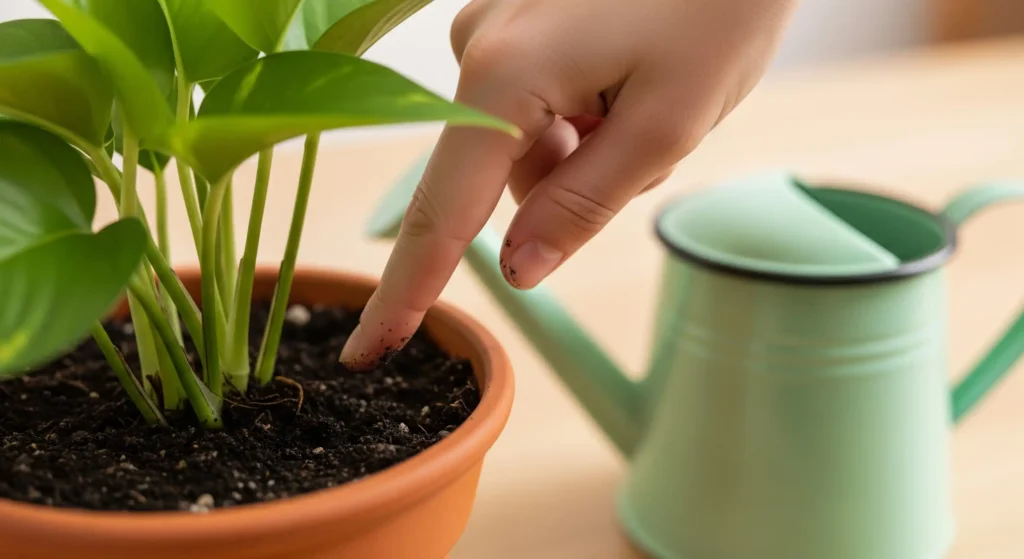
- Signs: Leaves becoming yellow (particularly the lower ones), stems that feel mushy, soil that stays damp for days, and maybe even a strange smell.
- Solution: Stop watering right now! Let the ground dry out completely. To check the roots, you may need to carefully take the plant out of its pot. If they are brown and mushy, root rot has set in. Use clean scissors to cut off any roots that are damaged, and then put the plant back in new, dry soil. And from now on, keep that “check the soil first” saying in mind!
The Underwatered Uh-Oh
- Signs: Leaves that are wilting, edges that are crispy or brown, and dirt that is peeling away from the sides of the pot.
- Solution: Water your plant well until water starts to come out of the holes in the bottom. If it hasn’t been dry for too long, it should start to look better in a few hours. Check the soil more often, if you can.
The Problems with the Wrong Light
- Signs: If the light is too low, your plant can develop “leggy” (long, stretched-out stems with few leaves) or lose its color. If the light is too strong and direct, the leaves may get burned patches or lose their color.
- Solution: The answer is to watch your plant and the light it gets during the day. If it looks dissatisfied, move it to a place that fits its needs better. Little changes can have a tremendous effect.
A Quick Word About Pests: Ignoring Unwanted Guests
- Signs: tiny webs (spider mites), sticky stuff on foliage (aphids or mealybugs), and small flying bugs in the soil (fungus gnats).
- Solution: Don’t worry! You can deal with most common houseplant pests. For novices, cleaning the leaves that are afflicted with a wet cloth or spraying them with a mild insecticidal detergent or neem oil spray (which you can find at garden centers) can often work. The most important thing is to catch them early. Check on your plants every week or so.
Giving Up Too Soon
- Please note: Plants are living things and need time to become used to new places. You are not a failure if you have one yellow leaf! Watch your plant, learn what it needs, and be patient. Taking care of plants is a voyage of learning and growth for both you and your plants.
Conclusion: It’s time to start making your home greener!
So there you have it: a whole group of great, tough green friends who can make your home brighter without adding a lot of stress to your life. Plant motherhood is really open to everyone, especially if you start with the appropriate plants. The best easy houseplants for beginners that we’ve looked at today are great places to start because they will help you feel more confident and bring a little bit of nature’s tranquility inside.
What I think is best? Choose one or two that you like and take them home. Then just start. Don’t try to be flawless; try to connect. Find out what they require, enjoy their calm companionship, and watch them grow (and your confidence!). Welcome to the beautiful world of houseplants! Happy planting! You can do it!
Frequently Asked Questions: Quick Answers to Your Questions!
Do you still have a few questions? That’s very typical! Here are some responses to questions I often get from people who are new to plants:
How can I tell if my plant needs a bigger pot?
There are usually a few symptoms that give it away. If roots are coming out of the drainage holes or the plant looks to dry out very quickly after watering (since the pot is primarily roots), it might be time. If the plant’s development has slowed down a lot or it looks a little top-heavy for the pot it’s in, that’s another warning. You normally only need to repot every one to two years, and you usually only need to go up one pot size at a time.
Can I water my houseplants with tap water?
For most of these challenging plants for beginners, tap water is typically fine. Some plants, like Spider Plants or Calatheas (but not Calatheas, which aren’t on our super-easy list today), can be sensitive to the chlorine or fluoride in some tap water. This can make the tips of their leaves turn brown. If you’re worried, you can let your tap water out overnight before using it. This will let some of the chlorine evaporate. You can also use distilled or filtered water.
What are the safest houseplants for pets?
The Spider Plant is a great choice for pets that is well-known and safe! If you have pets, always double-check the exact plant, because some plants that look safe might be dangerous. The ASPCA website has a wonderful database that you may browse to find out how poisonous plants are. Snake Plants, ZZ Plants, Pothos, and Peace Lilies are great for novices, but they are moderately poisonous to pets if they eat them. If you have curious cats or dogs, you should keep them out of reach.
There isn’t much natural light in my apartment. Do you have any plants for me?
Of course! Don’t give up, low-light fighters! The Snake Plant and the ZZ Plant are two plants that do well in low light. Pothos can also grow in places that aren’t very bright. They may not grow as quickly in dim light, but they can live and look great. Just be extra careful not to water too much in low light because the soil will take longer to dry out.
How often should I actually be giving these easy plants fertilizer?
To be honest, fertilizing these easy-to-care-for plants isn’t a high priority, especially when you’re just starting out. They do a wonderful job of growing with what’s in their potting mix. You can apply a balanced liquid houseplant fertilizer diluted to half the recommended concentration once a month or every other month if you’ve had them for a year or more and want to give them a little push during their primary growing season (spring and summer). But they’ll probably forgive you if you don’t do it!



